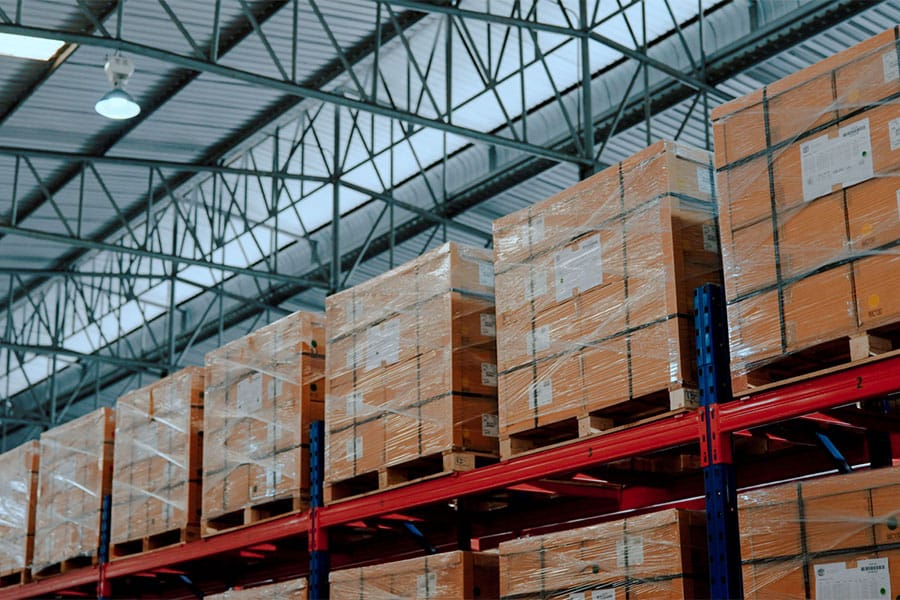Pallet strapping is essential to maintaining a safe and well-organized workplace or shipping environment. Strapping materials help keep your goods secure for shipping and storage, protecting goods and personnel. Yet, with all the choices available for strapping, which is the right option for each situation? Join us below as we break down the most popular types of strapping materials, their functions, and use cases, including how to balance the cost, strength, and efficiency of your strapping product of choice.
Types of Strapping Materials: Steel vs. Polypropylene vs. Polyester.
The three most popular types of strapping material are classic steel banding and plastic-derived polypropylene and polyester. Each of these comes with its own set of benefits and drawbacks and excels in situations where the other materials may be too dangerous or prohibitively expensive.
Steel banding is the most obvious one at a glance as it is made from stainless materials, which are resistant to rust and environmental effects. Thanks to its strength and durability, it is your classic strapping material, famous for centuries. It must be applied with the use of hand tools or automated machines.
Polypropylene is a plastic-derived synthetic material often finished with a matte pattern and embossed for extra strength. It has a lower-than-average tensile strength and can be easily applied by hand or with simple tools.
Polyester is a glossy and smooth plastic-derived material with a similar strength and use cases as steel but with the lightweight properties of other plastic strapping options. Like steel, polyester must be applied with specific tools or by an automated machine due to its rigidity.
Factors Influencing Your Choice Of Strapping Material: Product Type, Shipping Method, and Cost Considerations
There are several factors to consider when you are choosing a strapping material. Will it be for long-term storage? What are the weight and dimensions of your products? How much are you willing to spend on strapping products? The following are some factors and which scenarios best fit each product.
- Common Product Types For Each Material
- Steel: Steel is a classic option and is the go-to for many heavier materials shipped long distances. Any product exposed to the elements or stored outside, like lumber or exterior tiles, can benefit significantly from steel strapping.
- Polyester: Polyester has a similar strength to steel but with more flexibility and a little give. Building materials, heavy pallets of beverages, and other heavy products stored inside are the most significant advantages of polyester strapping.
- Polypropylene: Polypropylene is a strong and economical strapping material. It is excellent for lightweight products or those needing a little breathing room when shipping. Products best suited for polypropylene strapping are food products, mail, and other light objects.
- Shipping Method Matters: If you are looking to ship via rail, steel isn’t just recommended; it is required by law. However, to save on shipping costs and weight, the lightweight options of polyester and polypropylene can be interchangeable depending on your product.
- Cost: There is no getting around it; steel is likely the most expensive material for strapping. Polyester is a close second due to its more complex production and need for greater tension along with banding tools used in its application. Conversely, polypropylene is the least expensive option.
Get The Most Out Of Your Strapping With Strapping-Products.com
The choice between strapping materials can be difficult, but by following this guide, we hope you can make an informed decision on which is best for you. To get the best quality at the lowest prices on your next strapping order, feel free to reach out to the Strapping-Products.com team today at 888-803-8140.


